Updated: January 18, 2014
Testing RedHat Enterprise Linux (RHEL) at home is not a simple thing. Not because it cannot be done, but because the benefits are so stellar and so far off the chart that few people will know, understand or care about the immense technological bits and pieces added to the core. Still, review we must.
Today, I'm just going to give you a sampling of what the system can do. Not from the enterprise perspective. From the home user perspective. Why, you may ask? Well, because one day, we will have CentOS and Scientific Linux spawned off this thing, so it's worth knowing what your next forever-supported desktop might look and behave like.
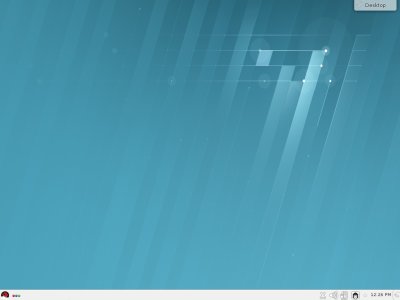
Laptop and virtualization tests
Like the testing of RHEL 6, which was then based on Fedora 12, I first tried the distro on a T61 machine, blessed with a dual-core processor, Intel graphics and wireless, and two SSD for local storage. The current RHEL 7.0 Beta is based on Fedora 19, a very recent release, and comes with a whole bunch of upstream fixes and whatnot. The ISO download is quite hefty, at a full DVD size, but it includes all sorts of goodies. You also get two desktops available, including Gnome 3 Fallback and KDE. Yup, you read it right. Apparently, RedHat does not feel that the stock interface is good enough for the typical enterprise environment use. Maybe. Methinks. Read it somewhere. And such.
When booting on the laptop, I was forced to use an external DVD, because I could not get the distro to run off a USB stick. But that's a tiny issue, really, with this kind of system at hand. Anyhow, the image booted directly into the installer, which offered to setup the network first and foremost. HEL 7.0 had no issue detecting and using the onboard Wireless, and I was able to connect to my password-protected routers without any problems. Really neat.
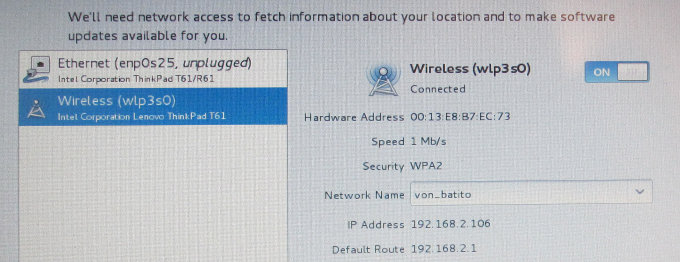
After that, you get the new Fedora-like installer, with some extra steps, including the setup of software. I had no issues with any one particular step, including the partitioning for the quad-boot layout already used on this machine. The installation was relatively quick, given the use of the slow DVD media.
Unfortunately, after the first boot, RHEL 7.0 Beta hanged after about six seconds into the boot sequence. I have not been able to pinpoint the source of the problem, and so, I was not able to continue the testing on the laptop. Now, do note that this is a server system never intended to be used on your household gadget, so I can't really be angry or anything like that. Merely disappointed that I could not test everything as I expected.
Virtual machine testing
I resorted to trying RHEL 7.0 Beta as a virtual machine, which also means you get installation screenshots. Repeating the procedure above, I set about customizing the system for use. The most interesting bit is the Software Selection step.
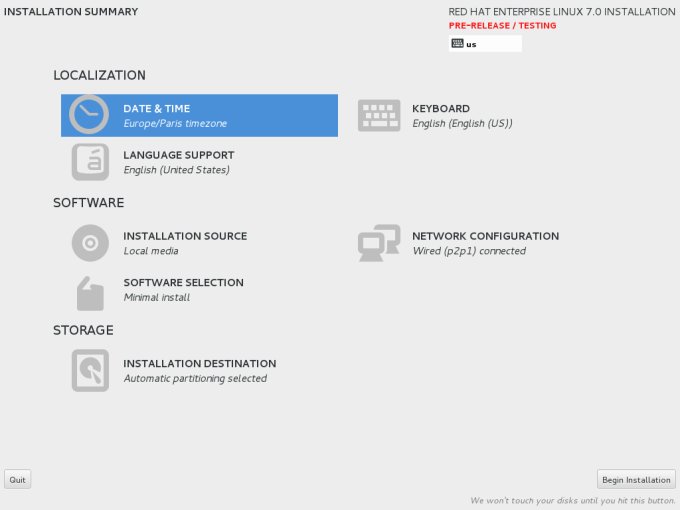
By default, only the minimal install is selected. By you can make your own choice. There's quite a lot of goodies available. You can choose a range of base environment options and add-ons. For example, I selected KDE Plasma Workspace as my desktop, and then added all sorts of Internet and KDE apps, multimedia support, office suite and productivity tools, X Windows support, and other interesting items.
RHEL 7.0 also offers OpenJDK instead of Oracle Java, and you won't find MySQL in the list, either. Instead, you get MariaDB, a clear sign that RedHat is slowly but surely distancing itself from Oracle's IP. You will get all the legacy support, as an enterprise customer, but a decade from now, it will be a different story. I won't say I'll be sorry to see Oracle's tools go away from the mainstream, especially given their overall attitude in the open-source community since the Sun Microsystems acquisition.

The installation completed without any problems. During the first boot, you must accept a license agreement, and then, you can also setup Kdump, which is an important component for continued quality of your distro, so often ignored.
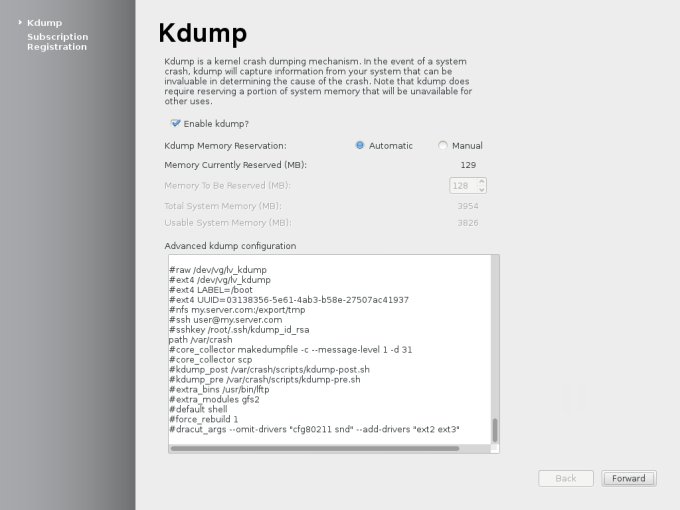
Next, login, and then, you will enter your desktop. It's a fairly pretty yet spartan KDE session. The network is not enabled by default, so you will have to toggle the switch to get it working.

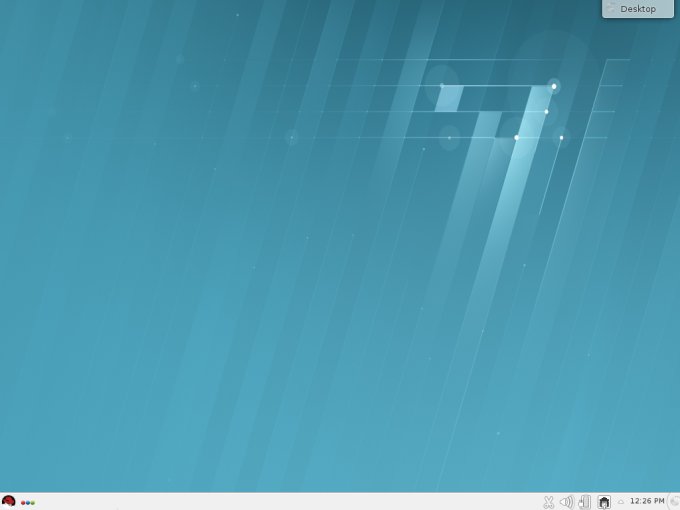
After that, I tried to install the VirtualBox Guest Additions, which meant obtaining kernel headers, gcc, make, and other build-essential tools first. In turn, this meant enabling the available beta repositories, which are disabled by default. You will have to go under /etc/yum.repos.d, open the single repo file there and toggle enabled=0 to enabled=1, to be able to install new software.
Alas, VirtualBox does not yet fully support all of the advanced features included in the RHEL 7.0 Beta, including backports from kernel 3.13, as well as the X-Org version, which is too advanced for the Guest Additions setup. You can edit the file to ignore checksums and change the declaration for the switch case for the xorg files, but it's best to wait until they become officially available. For me, this was another snag, meaning I could not enjoy a full-blown resolution and other tweaks with the tested distro.
Overall impressions
Ignoring the bleeding edge droplets, RHEL 7.0 is a capable, well-polished and stable system. You have a lot of non-server stuff available, should you desire it. After ticking a handful of checkboxes during the install, I had Firefox ESR, LibreOffice, Evolution, Ekiga, Dragon, and other software available, plus a handful of useful and interesting system administration tools and utilities. Nothing revolutionary, but solid and good.
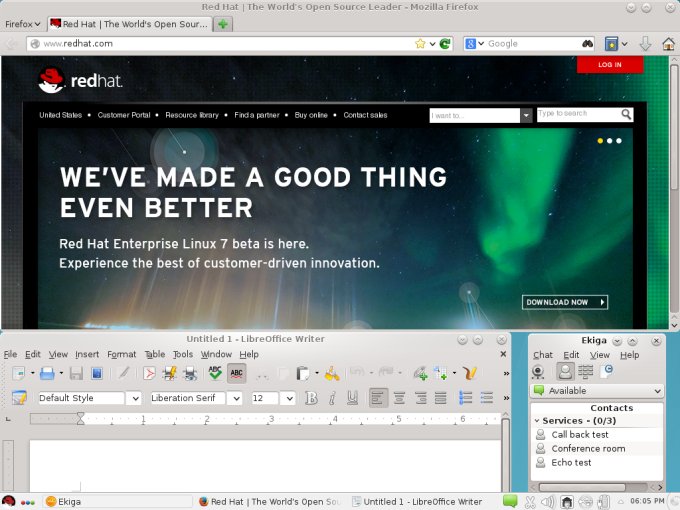
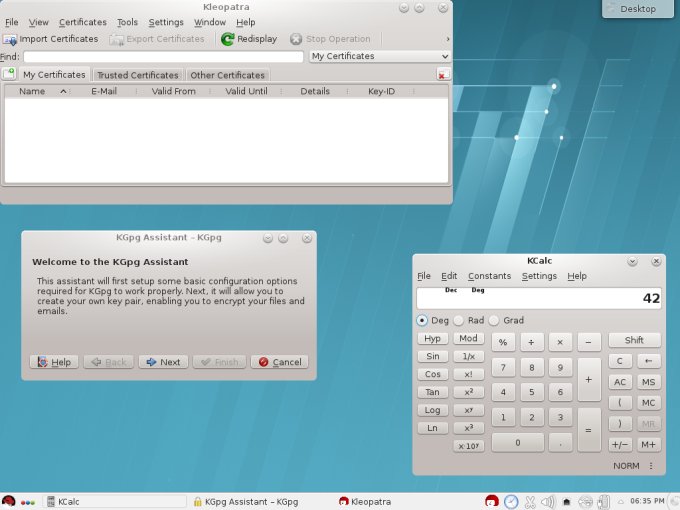
Samba & printing
Surprisingly, this time, access to Samba shares worked fine. More than that, RHEL 7.0 Beta was able to write to NTFS shares without any issues. On the other hand, the KDE printing to Samba shares remains broken, as we've discussed many times before.
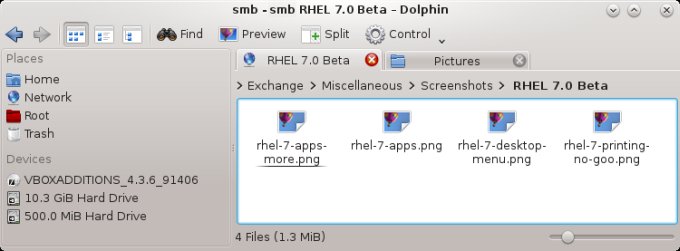
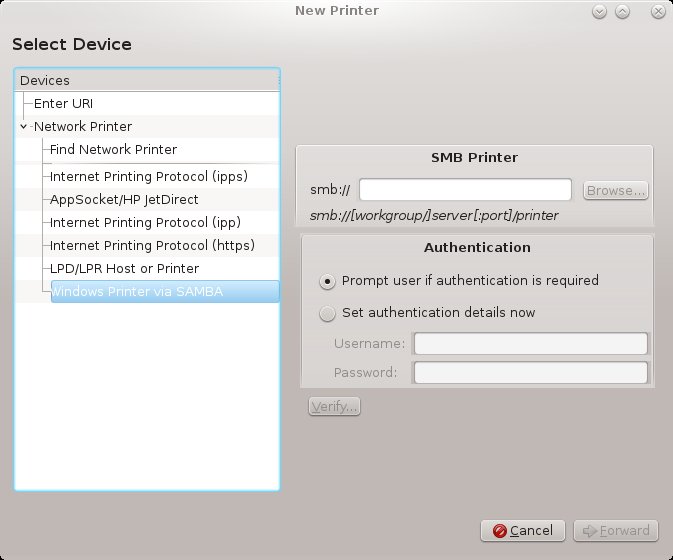
Gnome desktop, as an afterthought
Yup, I tested this one too. As it turns out, rumors or not, the Beta version offered a full Gnome experience, including the windows without minimize and maximize buttons, Activities, and all the rest. Not sure what gives here, so let's wait and see.
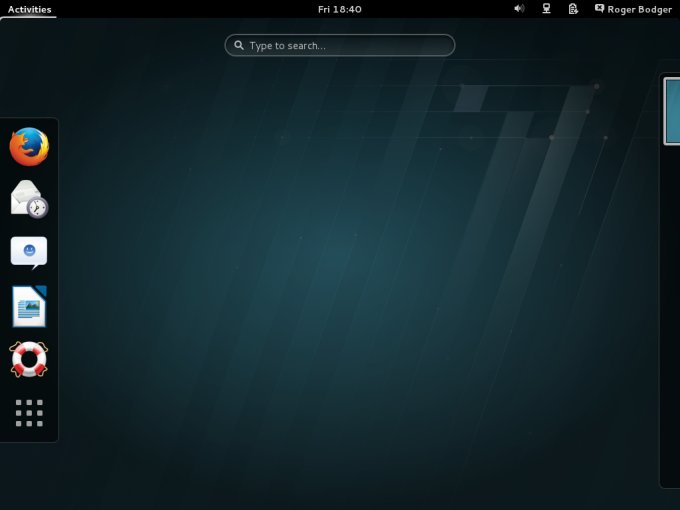
Conclusion
I don't have a mind-blowing conclusion for this review. It's somewhat hard judging what a server distro can do based on a short laptop test, followed by a somewhat limited virtualization stint. But the fact it offered a Wireless network setup upfront tells a lot.
RHEL 7.0 Beta looks and feels modern, and it packs a bunch of goodies It ought to be a great baseline for the CentOS and friends come the next year. By then, the little weird and odd things should be sorted out, including Samba printing, network auto-starting and other glitches that may arise. The sole purpose of beta releases, right. Still, despite all that, as expected, steady as a rock. Well, no false flattery intended, and somewhat too early to say for sure, but the future should be interesting.
Cheers.